Submitted by WA Contents
A well-contoured art pavilion is built to remind a historical tragedy in Hiroshima
Japan Architecture News - Jul 11, 2017 - 15:34 15543 views

This floating art pavilion - covered by thousands of wood shingles - is situated in Shinshoji Zen Museum and Gardens within the campus of Tenshinzan Shinshoji temple in Fukuyama-city, Hiroshima, Japan. The pavilion features a well-contoured form and smooth surface raised above the ground with very slender columns that create a walkable space beneath its undulating surface with natural stones.
Named Kohtei, this elegantly-designed pavilion is commemorated to several people who lost their lives in accidents at sea and industry. The Kohtei art pavilion creates a memorable Zen experience at the complex. The Kohtei offers the visitors an opportunity to contemplate spirit of Zen by looking at its landscape and gardens and being subjected to a meditation like experience through its art installation.
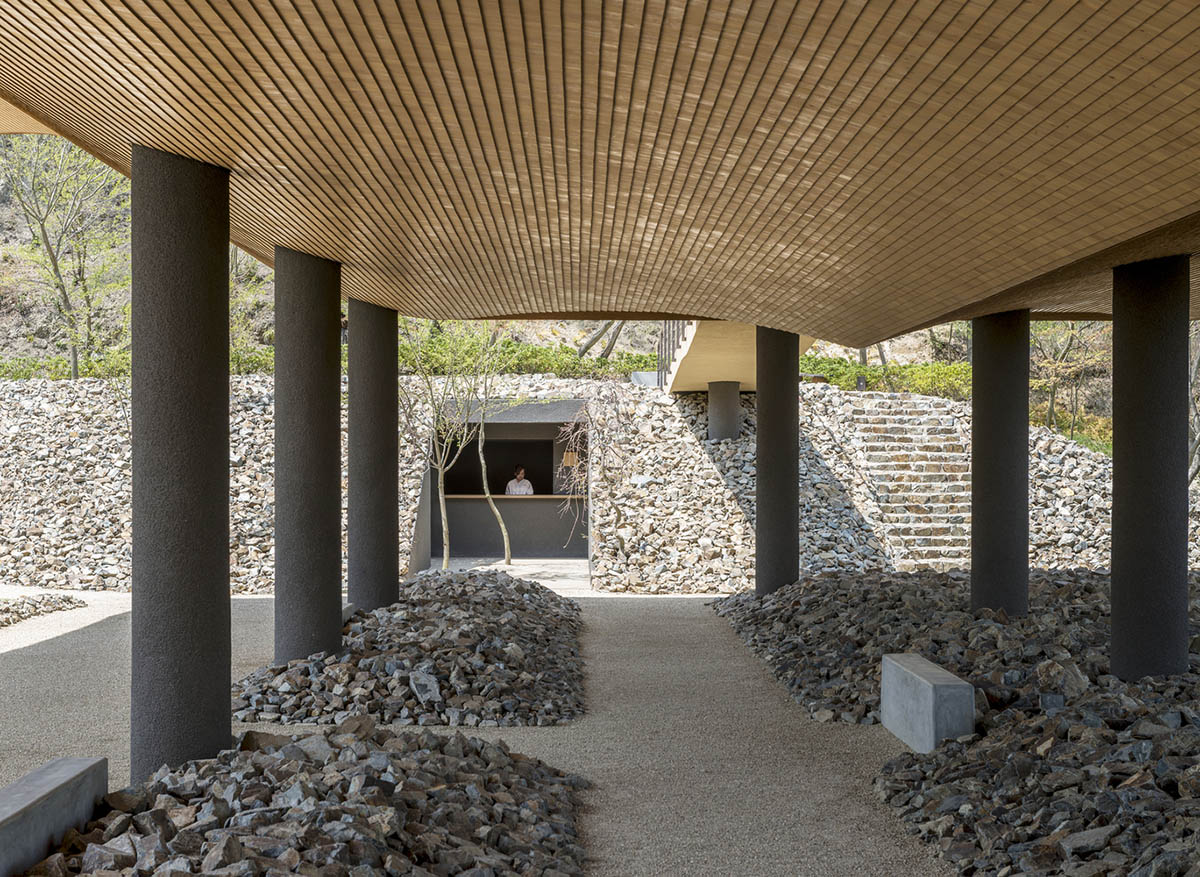
The Kohtei pavilion aims to generate creative expressions of inseparably integrated architectural functions: the reality created by the materials and textures, and the experiences they engender. The pavilion is designed by Japanese contemporary artist, Kohei Nawa and architects Lee Yoshitaka and Yuichi Kodai from Sandwich - a creative platform produces various disciplines located in Uji River in Kyoto, Japan.
The building consists of a seamless and minimal footbridge, providing the visitor with a breathtaking first impression. The pavilion includes only one door to enter in and it doesn't include any window on the facade.
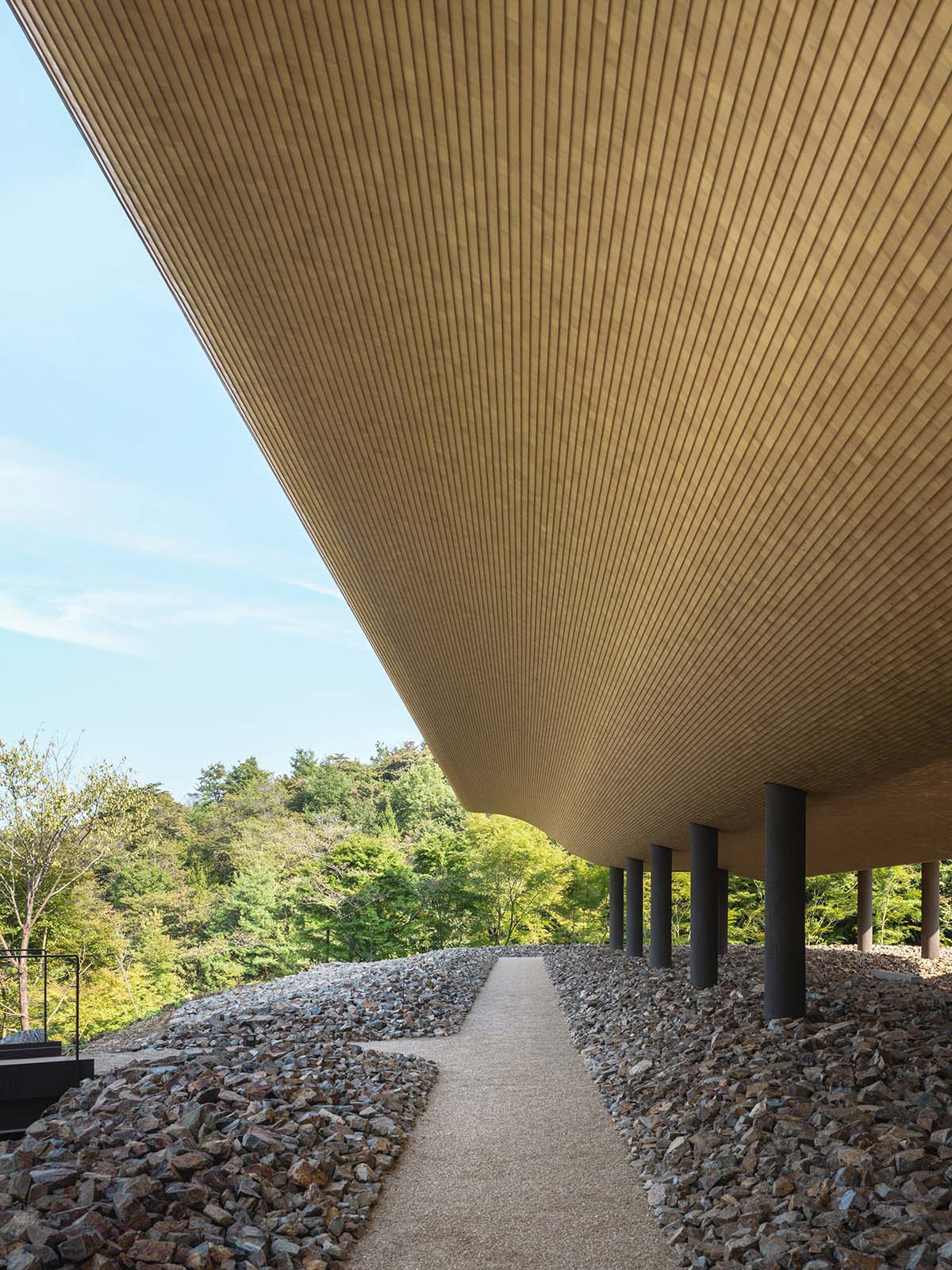
"Kohtei's distinctive form was inspired from the roots of temple’s establishment which led to create a building that resembles the motif of a ship," said Sandwich.
"It is 'an architecture that floats on waves surrounded by mountains' and is themed to work with three fundamental materials wood, stone and water," added the studio.
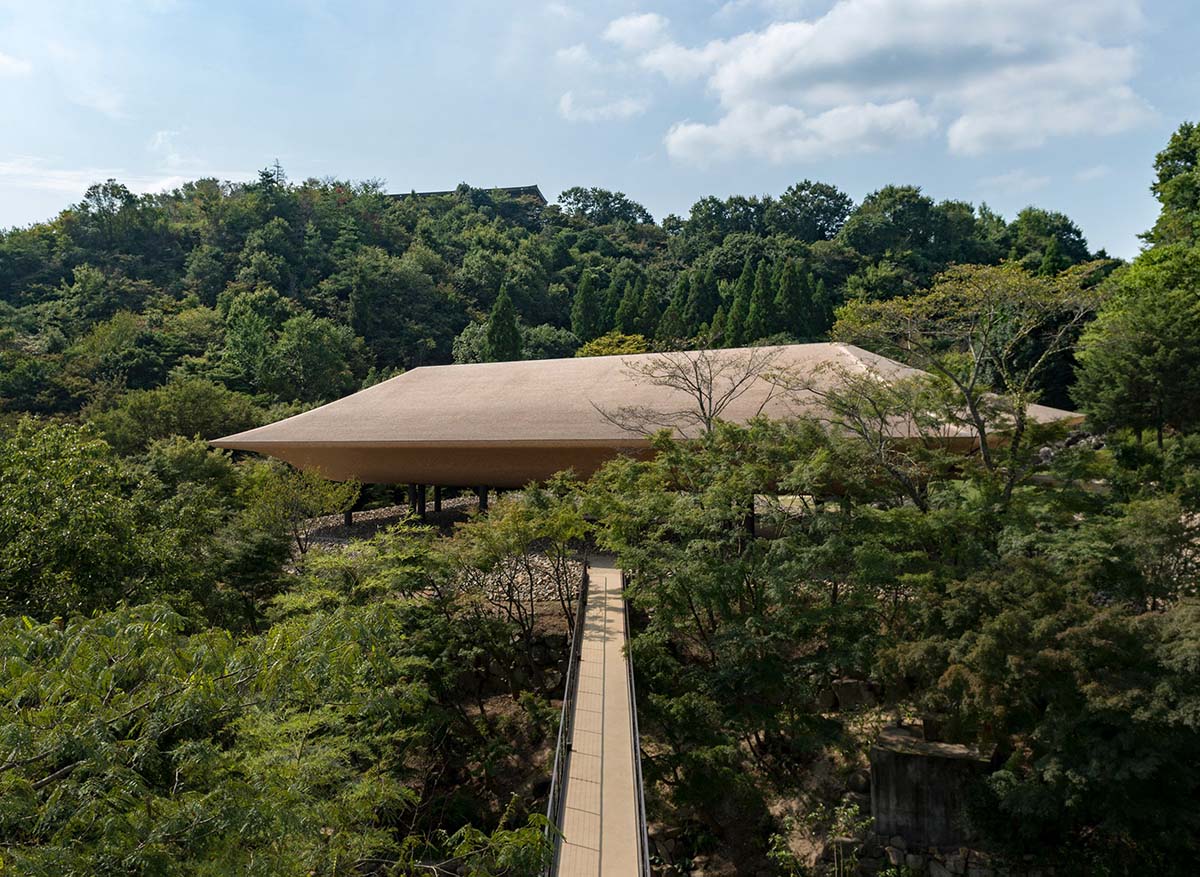
"The ship-shaped building, covered with wood shingles that uses the traditional Kokera roofing technique floats above the stony landscape. Walking through the ocean of stones, full of materiality, one goes up the gently sloping walkway to reach the entrance of the building. Upon entering the interior, a quietly rippling ocean with glimmers unfolds in the darkness," explained Kohei Nawa.
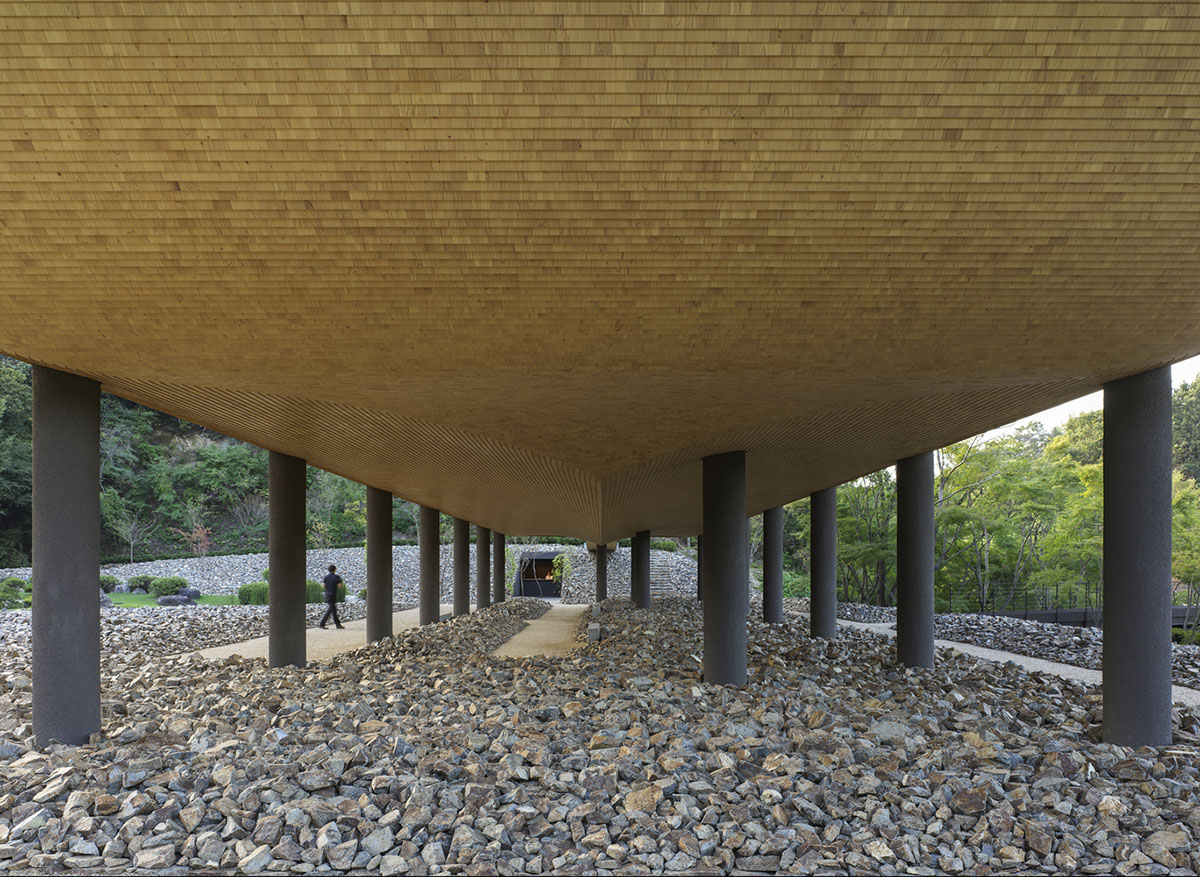
The body of the pavilion is entirely covered with Sawara wood (Japanese cypress) that seems to hover above the landscape creating underneath a piloti space. The woodwork on the roof was laid using Kokera-buki, a traditional roofing technique that is available in Japan for thousands of years.
This is a kind of shingle roofing where instead the tiles are 100mm x 300mm x 3mm thick, and 9 layers of tiles are fixed with bamboo nails making one roof compound. In total, 340,000 pieces were laid by the16th generation roofing master based in Kyoto. For the soffit, 250,000 pieces of 100mm x 100mm Sawara wood tiles were used in order to give a monolithic appearance to the pavilion.
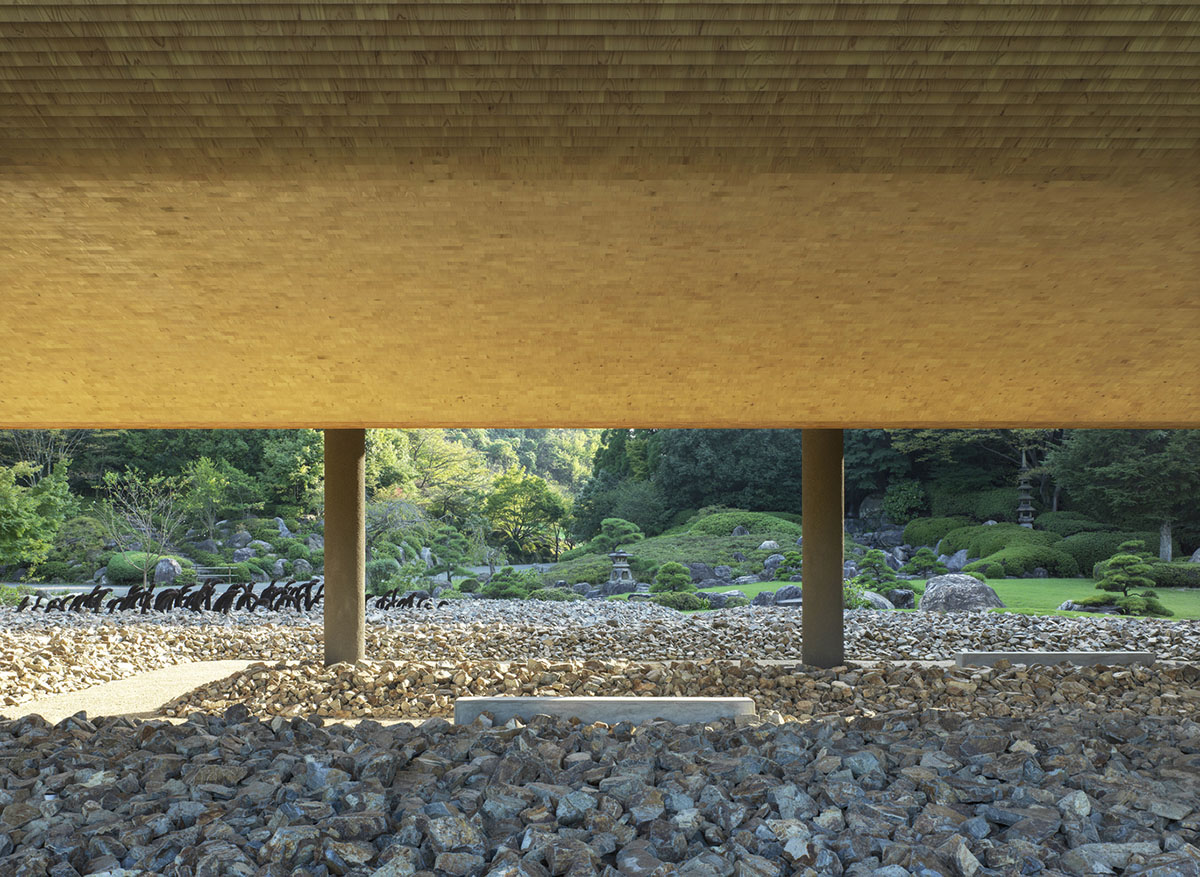
The experience of standing underneath such space enhances the stark materiality of the landscape against the airy contours of the wooden roof. Surrounding views are framed and visitors can experience ever changing sceneries. The stone landscape represents the ocean in which the ship smoothly floats.
The rugged stone has a high content of iron that rusts over the time. It was brought from nearby quarries unrefined and in its original state just as the dynamite blasted it off the face of the cliff, where each stone varies in size and shape, and its sharp edges provide a strong effect of contrasting light and shadow to the surrounding landscape.
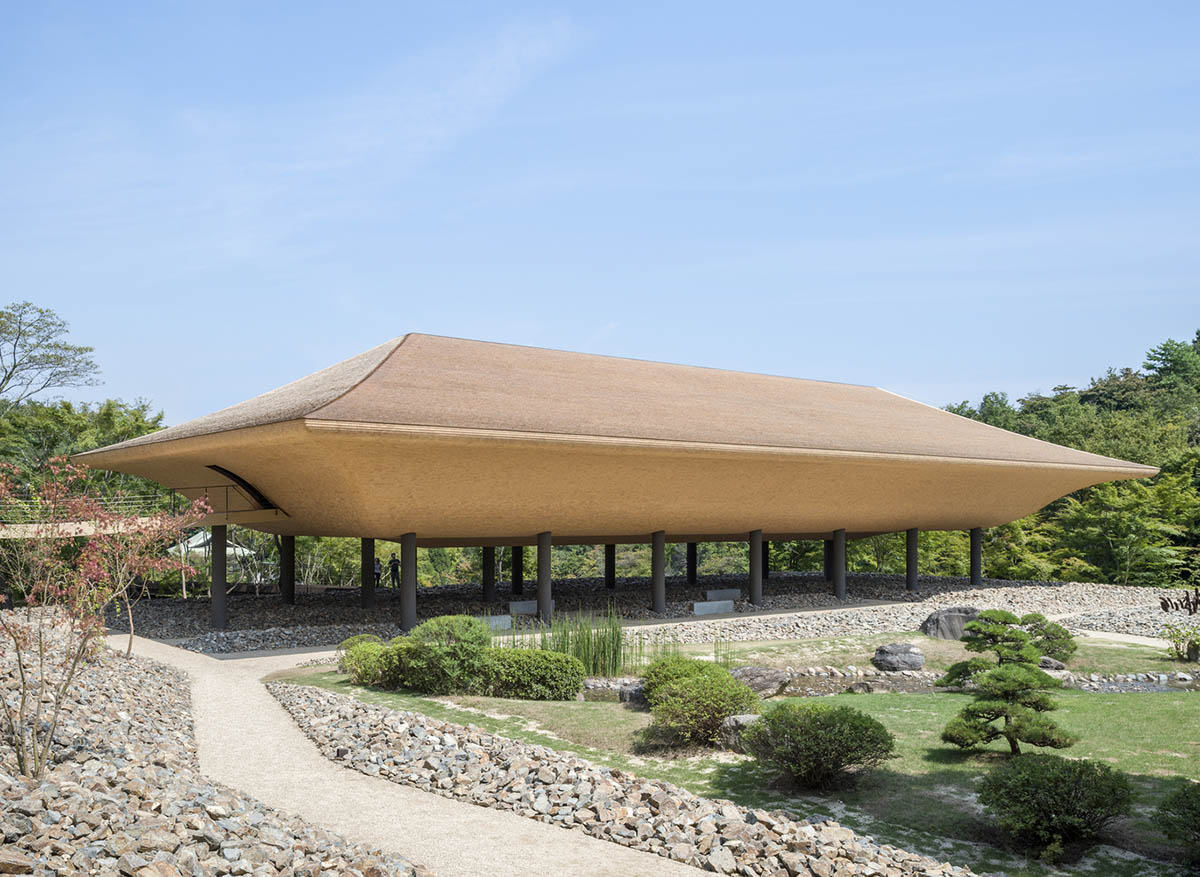
The path guides the visitors through the landscape, garden and building providing them with one seamless experience, allowing them to perceive the building in its multiple aspects.
The path gradually leads the visitors into the interior of the vessel-like roof through a small entrance where one finds an installation spreading in the darkness. The installation represents the immensity of the ocean and visitors can experience meditation while observing the shimmering lights reflected on the quietly rippling water waves. The darkness together with the faint sound of the room, curiously sharpens the visitor's vision and auditory senses.
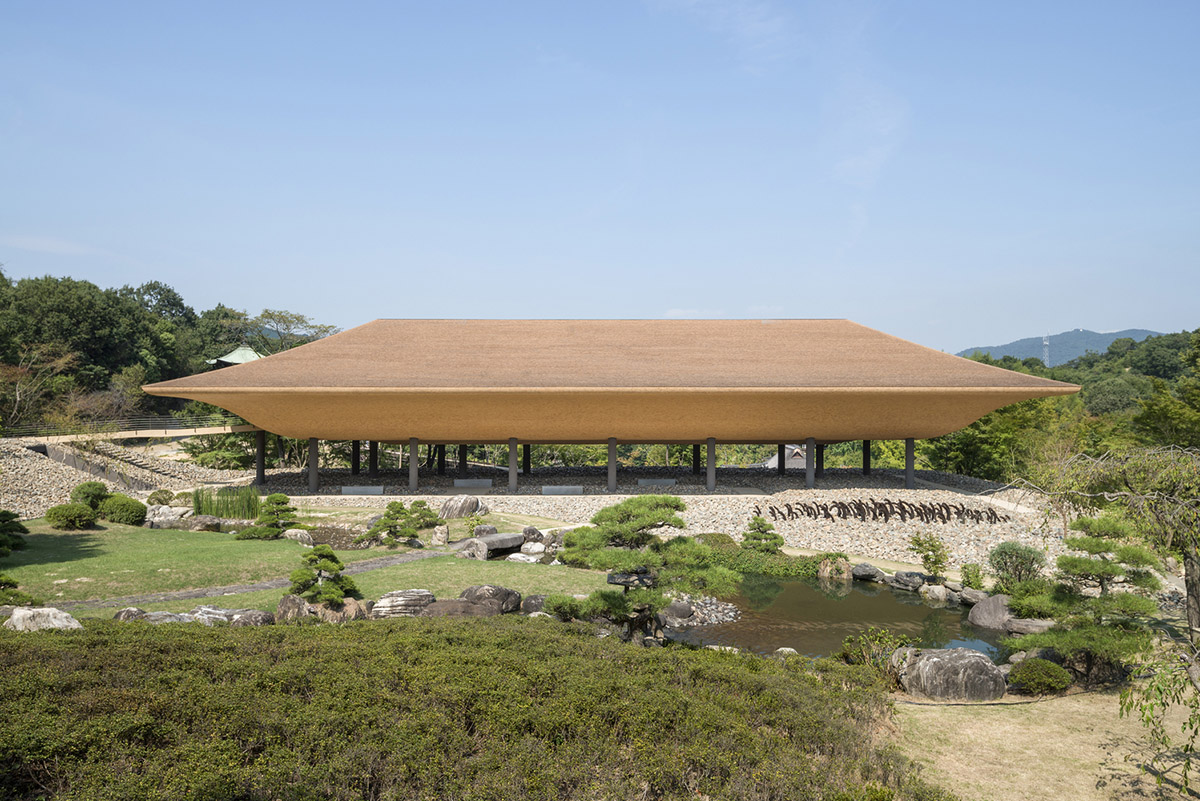
Each individual will sense the meditative time and space differently. It was not intended to directly express Zen, but visitors retain the memories of their visit and have the opportunity to consider the sensibility and philosophy of Zen.
The Kohtei is a structure that exterior, interior and underneath space reflects the enfolding experience of being in the mountains, creating work that combines both physical and mental experiences.
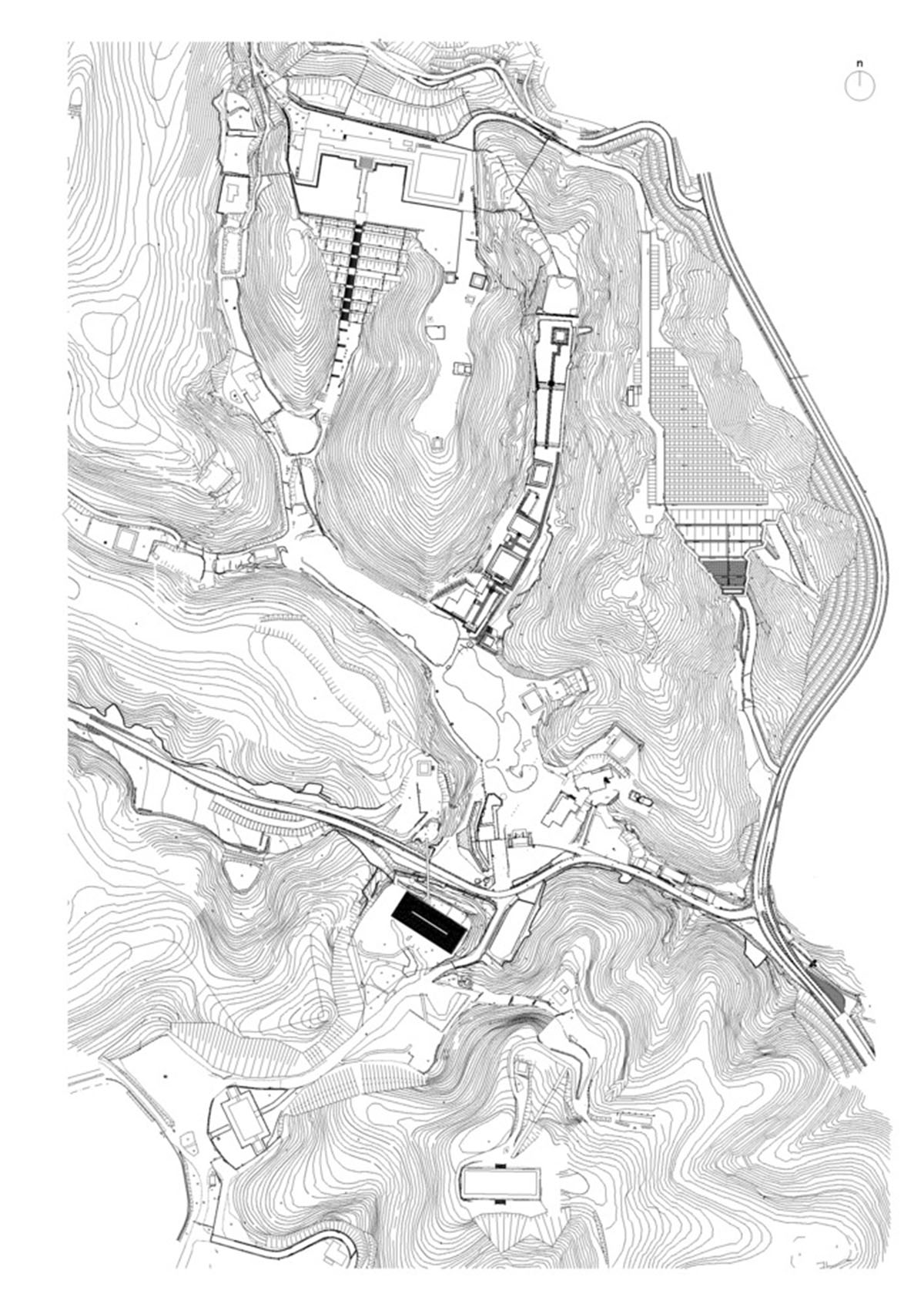
Site plan
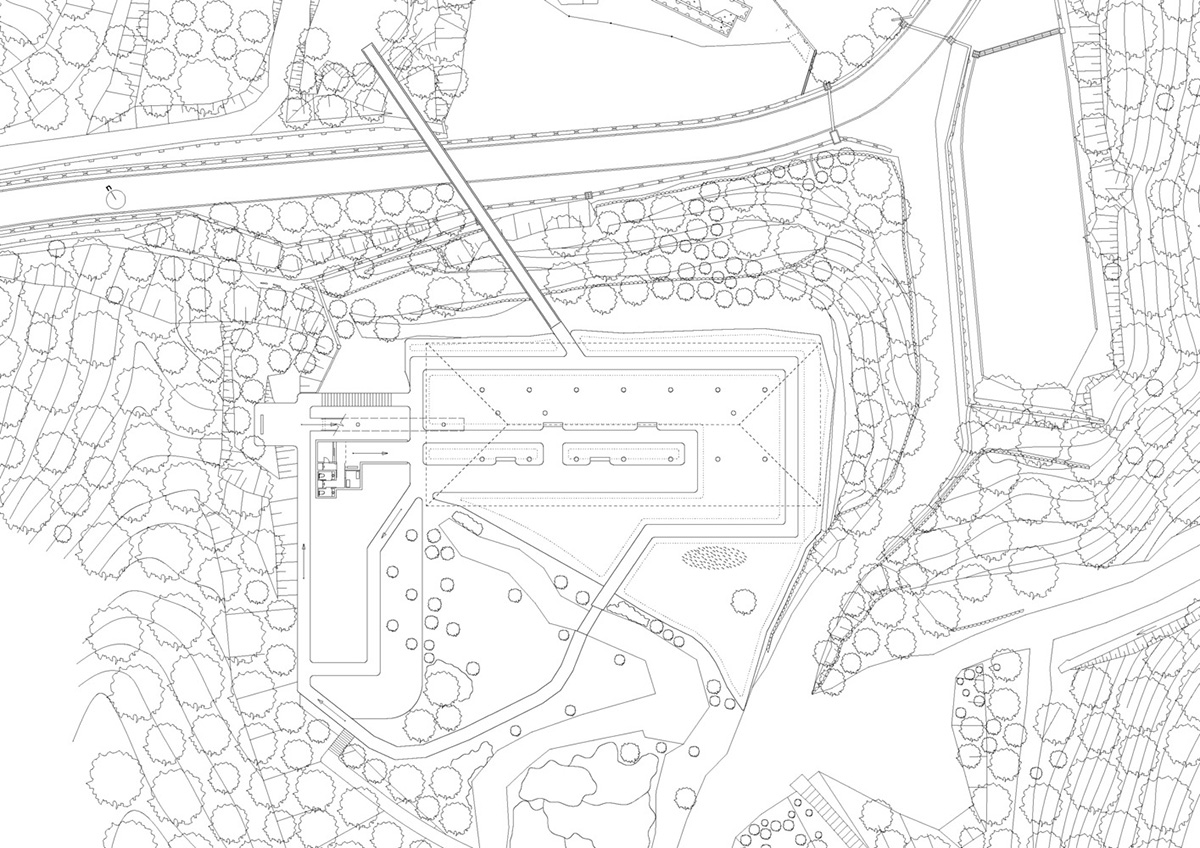
Site plan-2

Cross-section
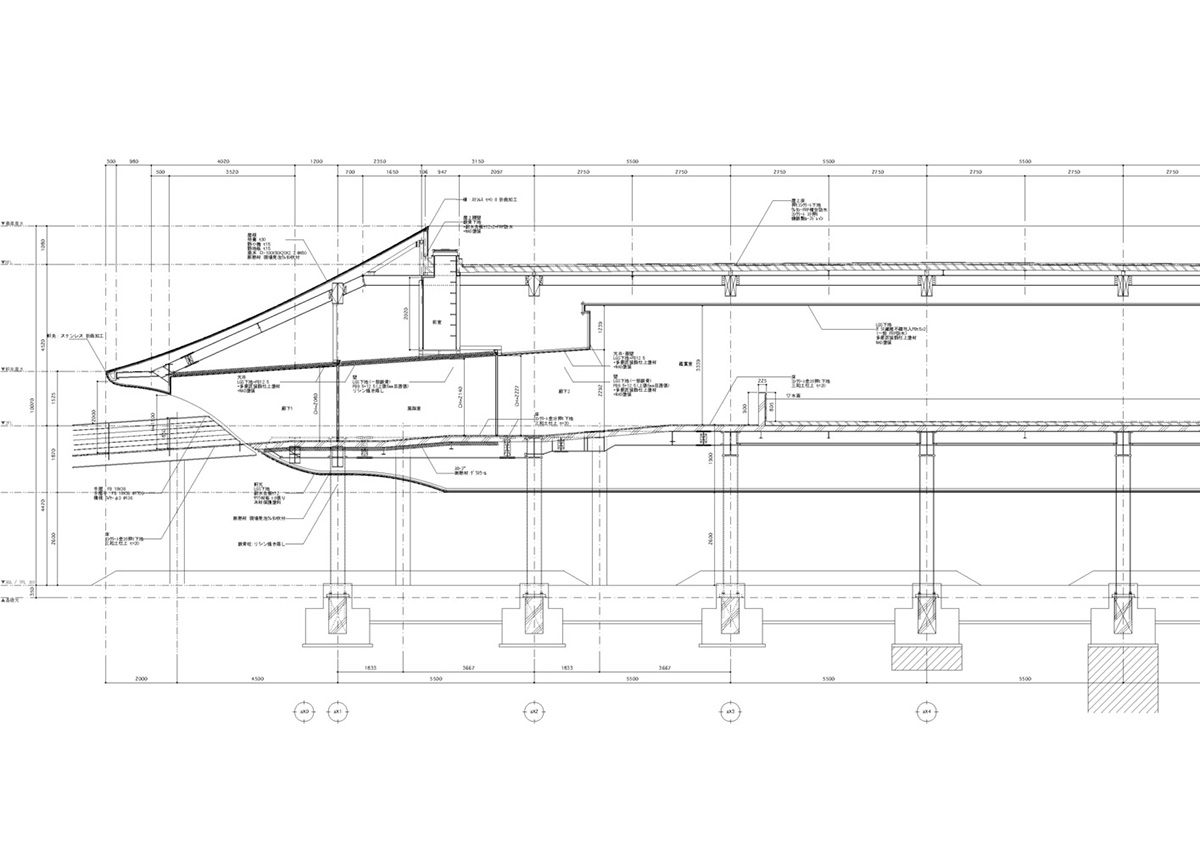
Longitudinal section
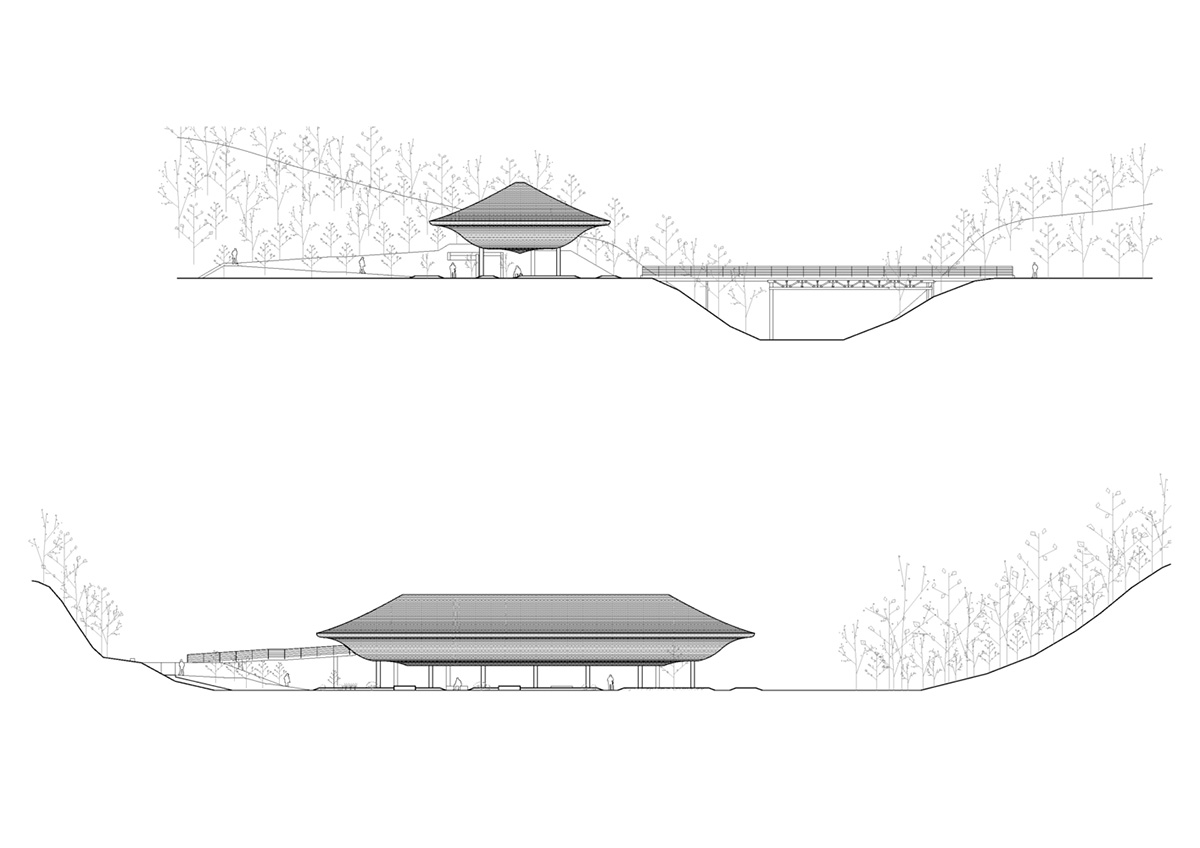
Elevations
All images © Nobutada Omote
> via Sandwich
